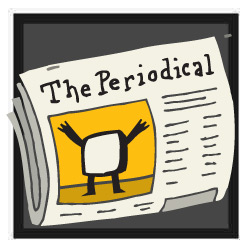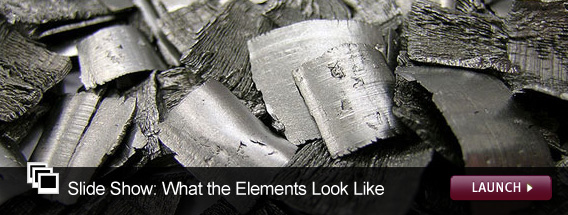Blogging the Periodic Table

Is anything better than a fancy diamond? Actually, yes: a "fancy, intense" diamond. And according to one official scale of superlatives used to grade diamonds, even better than a "fancy, intense" diamond is a "fancy, deep" diamond. But a girl's very, very best friend is actually a "fancy, vivid" diamond. There's one of those going up for auction at Christie's this week, and it's expected to fetch $12 million to $15 million. What makes this diamond so valuable?
Boron. On a submicro scale, pure diamond is billions of billions of carbon atoms bonded to one another. If you shrunk yourself down and stood inside the diamond, you'd see nothing but carbon in a perfect pattern in every direction. Carbon atoms have four electrons available to form bonds with four other atoms, and because there's nothing else but carbon to bond with inside a diamond, each of the four bonds is equally strong, leaving no weak spots in any direction. This gives diamonds their proverbial hardness, but also leaves them transparent. Light interacts primarily with electrons, and when all the electrons are tied up in bonds, visible light streams right through.
Boron is carbon's neighbor on the periodic table, which means it can do a passable carbon impression and wriggle its way into the matrix of a diamond. But it has one fewer electron, so it can't quite form the same four perfect bonds. This different distribution of electrons doesn't weaken the diamond appreciably, but it does free up electrons to interact with visible light. Because boron absorbs lower-energy red light, the light that streams through has a blue hue. The price of diamonds can vary greatly depending on size, cut, color, and other factors, including whether they have a history. But because of the rarity of blue boron diamonds, they often fetch more money than gems of similar quality.
Boron's not the only element that can perform this trick. Carbon's eastern neighbor on the table, nitrogen, dresses up diamonds in pinks, yellows, oranges, and brownish tints known romantically as "champagne." Other elements, like chromium—whose name derives from the Greek word for color, chroma—bring out the color in rubies and emeralds, albeit through slightly different processes than in diamonds. The matrix of an emerald consists of aluminum, beryllium, oxygen, and silicon (Be3Al2(SiO3)6). Ruby matrixes are aluminum and oxygen (Al2O3). Iron, manganese, and copper also make various gems shine.
And in case you're wondering, yes, boron is responsible for the color of the world's most famous blue diamond, the 46-carat Hope Diamond. (The diamond for sale at Christie's is the diameter of a quarter and weighs in at just 11 carats.) What's more, the boron and carbon matrix in the Hope actually has a real scientific puzzle hanging over it. When irradiated with ultraviolet light, the diamond glows a fierce orange, like the world's most expensive charcoal briquette. The effect lasts for several minutes. Other blue diamonds also phosphoresce, but none in quite the same way, and scientists don't know why there's so much variability.
As for whether this passionate orange color has any link to the supposed beheadings, drownings, stabbings, suicides, overthrown monarchs, and various other ill turns of fortune attributed to the Hope Diamond, scientists are still working on that, too.
Click here to launch slide show on what the elements look like.
Like Slate on Facebook. Follow us on Twitter.
